Israel and the Palestinian Conflict, part 1: Introduction
Israel and the Palestinian Conflict, part 2: A historical perspective
Israel and the Palestinian Conflict, Part 3: Modern Israel
Israel and the Palestinian Conflict, part 4: Refugees
Israel and the Palestinian Conflict, part 5: Pallywood
Israel and the Palestinian Conflict, part 6: Duplicity as an art form
Israel and the Palestinian Conflict, part 7: Right of conquest
Israel and the Palestinian Conflict, part 8: Conclusion
Where in the previous 5 chapters we spoke about topics directly related to Israel and the Palestinians, we also need to look at a few other historical facts, and examine their possible role as precedent.
To start: there is such thing as ‘right of conquest’. This is realpolitik, and has been used all throughout history, by the good guys as well as the bad guys. And no one ever complaints about this: it simply is the geopolitical application of the right of the strongest. Winner takes all.
Most Arab countries in the Middle East only exist because the British, as part of the Entente/Allied forces, defeated the Ottoman Empire, and took control of those lands. Together with the French (under the secret Sykes-Picot agreement, with tacit assent of the Russian Empire and the Kingdom of Italy), they divided the lands, and created what would become Lebanon, Syria, Iraq, Jordan, Saudi Arabia (given to the Arabs as part of the agreement Lawrence of Arabia struck with them), etc. Greece was one of the other countries borne out of the defeat of the Ottomans, not by the Greeks themselves. Who gave them that right to become independent again? The conquerors.
Think of it: the only difference between a hero and a traitor is whether or not they won their war. If the British Crown would have been as successful in their American colonies as they were in the rest of their colonies (Charles Cornwallis, know in the US for his surrender to Washington after losing the siege of Yorktown, was rather successful in quelling a whole host of other rebellions spanning the globe), we would read of Washington, Franklin, Jefferson, etc. as a footnote talking about ‘rebels’, hanged for treason against the Crown.
Next, refugees and relocation of whole groups of people.
First, taking a whole group of people, and placing them elsewhere, as done with the Jews post-WW2, is not uncommon. In the period 1945-1948, between 13.5 and 16.5 million German-speakers fled, were evacuated, or expelled from their homelands in Central and Eastern Europe. This includes, for example, the Sudetendeutsche, German people who lived in what is now the Czech Republic. Their presence there was the reason for the Annexation of Sudetenland in 1938. After the war, they received the brunt of the hatred of the Czech population, and blamed for all the ills the Nazi apparatus had brought over their country. Expelled without reparation or compensation, many people lost everything they had.
The Russians, for example, after having expelled the Germans from their Eastern lands (traditionally Western Prussia, Upper Silesia), took Königsberg for themselves after renaming it Kaliningrad, and forced 1.5 million Poles from the Eastern lands they had annexed into the now empty German lands.
Russia displaced and relocated many other groups within the border of the Soviet Union, as well. As did the United States. The National Parks Services wrote “Between the 1830 Indian Removal Act and 1850, the U.S. government used forced treaties and/or U.S. Army action to move about 100,000 American Indians living east of the Mississippi River, westward to Indian Territory in what is now Oklahoma.” Or there is the forced relocation of so many Japanese during WWII, as well: “From the end of March to August, approximately 112,000 persons were sent to "assembly centers" – often racetracks or fairgrounds – where they waited and were tagged to indicate the location of a long-term "relocation center" that would be their home for the rest of the war. Nearly 70,000 of the evacuees were American citizens. There were no charges of disloyalty against any of these citizens, nor was there any vehicle by which they could appeal their loss of property and personal liberty.”
There is a huge number of such events. The Germanic influx at the end of the Roman Empire. The European colonization. The current migrant streams all over the world, in particular towards Europe and the United States…
When it comes to the Native Americans or Japanese, we likely have heard of this, and agree that such was a bad thing. We likely never heard about the Poles who were relocated. Since they were moved from one part of Poland to another, to help rebuild the country, can we say it was bad, instead of necessary? And the Germans after WW2? They had it coming, for sure. That their relocation went along with mass rape, murder, looting and starvation, is irrelevant. They were GERMAN, right after WW2, expelled from Eastern Europe! Don’t you know what they did back there during the war? Our instincts go from disagreement ,over uncertain agreement, to likely agreement, when it comes to such relocations.
The surviving Jews from Europe relocated out of their own free will, now strengthened and official with the UN approved partition plan. The local people were not asked for their opinion, that is correct, just as none of the other local populations had been asked about the new boundaries that were drawn all around them.
As of April 1, 1945, the Village Statistics, 1945, were ordered by the British Mandate government, to count the population of Palestine Cisjordan.
“The report found the total population of Palestine to be 1,764,520: there were 1,061,270 Muslims, 553,600 Jews, 135,550 Christians and 14,100 classified as "others" (typically Druze).” In 1914, that was 525,000 Muslims, 94,000 Jews, 70,000 Christians, and an unknown but small number of ‘others’.
Since Palestine was a rather unproductive backwater of the Ottoman Empire, which had lost their war, the opinion of the previous population was not asked. The needs of the Jewish people, after WWII, required this relocation, and so it happened.
To see what a true genocide and expulsion looks like, check what the Turks under Mustafa Kemal Atatürk did between 1918 and 1923. They murdered and forcibly removed all Greeks and Armenians out of their country. Pure ethnic cleansing, pure genocide. The world, tired and still in shock after WW1 (which was still not really over by this time), and focused on what was happening in Russia (fall of Tsarist Russia, the October Revolution that usurped the earlier revolution that had already deposed of Czar Nicholas II), didn’t make a peep. This in turn became an example for Hitler.
On the website of GenocideEducation.org we can read this excerpt from a speech Adolf Hitler gave to his upper command in Obersalzberg, on August 22, 1939: “Our strength consists in our speed and in our brutality. Genghis Khan led millions of women and children to slaughter – with premeditation and a happy heart. History sees in him solely the founder of a state. It’s a matter of indifference to me what a weak western European civilization will say about me.
I have issued the command – and I’ll have anybody who utters but one word of criticism executed by a firing squad – that our war aim does not consist in reaching certain lines, but in the physical destruction of the enemy. Accordingly, I have placed my death-head formations in readiness – for the present only in the East – with orders to them to send to death mercilessly and without compassion, men, women, and children of Polish derivation and language. Only thus shall we gain the living space (lebensraum) which we need. Who, after all, speaks today of the annihilation of the Armenians?”
600,000 to 1.5 million Armenians and Greeks were butchered, raped, starved to death.
This is the background behind the story in Israel.
It serves as a very strong counter to the idea that the Palestinian violence was a response to the Jewish ‘theft’ and genocide and colonization of Palestine, as we often hear. Because the Palestinians are the victims, remember, and the Israelis the aggressors. But is that true?
As Reviv Hattig Gur explained, “The Palestinian strategy of terrorizing Israeli civilians is old, older even than the Israeli conquest of the West Bank and Gaza in 1967. When the PLO was founded in 1964 with the goal of driving the Jews from the country, the West Bank was still ruled by Jordan and the Gaza Strip by Egypt. The PLO adopted terrorism as the basic strategy for Palestinian liberation not in anger, but because it had just witnessed the astonishing success of the Algerian National Liberation Front in using such terrorism to drive the French from Algeria in 1962.”
But the Algerians, who fought from 1954 to 1962 in a complex war against the French colonial rule, had very clear goals, and did not demand ‘all or nothing’.
An article by Martin Alexander & J. F. V. Keiger, titled “France and the Algerian War: strategy, operations and diplomacy”, offers this insight: “Algeria reveals the operational success of the responses by the French military forces and psychological warfare service. The war’s international diplomacy suggests that another ‘operational theatre’ – that of the United Nations and world opinion – was were the Algerian National Liberation Front really outmanoeuvred France. This ensured that French Algeria’s days were numbered by 1960, despite French success in defeating the armed insurrection within Algeria.”
A study by Matthew Connelly, published on the February 2004 issue of Strategic Insights, analyzes the ‘Diplomatic Revolution’ that was the Algerian fight for independence. Met with a Muslim insurgency that demanded independence from French rule, not afraid to use terror and violence against civilians and non-combatants, and mainly against other fellow Muslims, the French responded by fighting the FLN on equal terms: brutally.
“The French army, it is held, had mastered the FLN using the classic methods of counter-insurgency. Yet the indiscriminate brutality of those methods so radicalized and embittered the populations of both France and Algeria that even far-reaching concessions would not suffice to maintain control.”
While the French army managed to win the war military (by the end of the war the FLN was a rag-tag group of poorly armed insurgents who never really controlled any part of Algeria and lost almost all their military engagements), the Algerians won their independence through the United Nations and global public opinion.
“From the very beginning, the FLN was determined to internationalize the Algerian war. Some of its leaders always resided overseas for that purpose, despite the mutual suspicion and discord that this introduced into the organization. FLN terrorism was calculated at least as much for its international as for its domestic effects. This was specifically true of the "Battle of Algiers," which arose from a conscious decision by the FLN to shift its focus from the countryside to Algeria's largest city, in order to claim a greater share of the world's attention. The FLN succeeded in part because it was able to gain recognition, within the non-aligned movement, as the symbol and avatar of a global crisis. But it also took pains not to present itself as the vanguard of a universal upheaval, and rejected strategies that linked the Algerian revolt too closely to pan-Arabism or radical Islamism. Islam was central to the FLN's rhetoric—it afforded an easy way to demonstrate that Algeria was not France—but not to its program. The FLN sought national liberation, a formulation that incorporated just enough ideological reassurance to get a sympathetic hearing abroad.”
The decision to fight a bloody fight within Algiers was calculated. The many civilian victims only added to the increased international visibility. Who created those victims was irrelevant. As the study noted, the FLN was a shadowy underground, not trying to confront the French directly, but instead “radicalizing the population by a combination of propaganda and terror. Most FLN violence was, to say the least, "non-military" in character. Much of it was directed at other Muslims, and was intended to discourage compromise or collaboration; also to inspire indiscriminate repression, which the French were all too willing to provide.”
And it worked. This provided the blueprint for Arafat, who founded Fatah in 1959 as a political movement. But where the Algerians moderated themselves, and were Islamic only in rhetoric, while their program was more pragmatic, Fatah was full on Islamic, and advocated for the ‘elimination of the State of Israel’. Even before Fatah and the larger umbrella group PLO finally stepped away from that founding principle through the acceptance of the 1995 Oslo I Accord (even if they only accepted that nominally, and preserved such talk and symbolism for their own supporters), Hamas was founded after the outbreak of the first intifada in 1987. For good part to help maintain the influence of the Muslim Brotherhood against encroaching success of rival terror group ‘Palestinian Islamic Jihad’ (PIJ), it rejects all accords between Israel and the PLO. Their 1988 charter started out with very clear language: “Israel will exist and will continue to exist until Islam will obliterate it, just as it obliterated others before it.”
In 2017, Hamas updated their charter, ostensibly to make it more palatable. Wikipedia gives a good overview of how it is ‘perceived’: “In 2017, Hamas released a new charter that supported a Palestinian state within the 1967 borders without recognizing Israel.” And “While the 1988 Hamas charter was widely described as antisemitic, Hamas's 2017 charter removed the antisemitic language and said Hamas's struggle was with Zionists, not Jews.”
Again, lies in action. The 2017 charter does NOT talk about the 1967 borders, on the contrary. “Palestine, which extends from the River Jordan in the east to the Mediterranean in the west and from Ras Al-Naqurah (likely Rosh HaNikra at the Northern Border of Israel) in the north to Umm Al-Rashrash (present day Eilat) in the south, is an integral territorial unit.” So basically from the River to the Sea, and from the top northern border to the southernmost tip of the country. There is no Israel. Still.
And while there is no mention made of ‘Jews’, only of ‘Zionists’, the mere presence of Jews in Palestine will be seen as ‘Zionism’. When talking about Jerusalem, for example, Hamas now writes: “Jerusalem is the capital of Palestine. Its religious, historic and civilizational status is fundamental to the Arabs, Muslims and the world at large. Its Islamic and Christian holy places belong exclusively to the Palestinian people and to the Arab and Islamic Ummah.” The omission of the Jewish presence and history is not by accident, but deliberate revisionism, aimed at delegitimizing any and every claim any Jew could have on this land. Even mere historical ones, such as about the Temple. No, Hamas makes no difference between Jews and Zionists.
Hamas explains it as such: “Hamas affirms that its conflict is with the Zionist project not with the Jews because of their religion. Hamas does not wage a struggle against the Jews because they are Jewish but wages a struggle against the Zionists who occupy Palestine. Yet, it is the Zionists who constantly identify Judaism and the Jews with their own colonial project and illegal entity.” Now, there IS a problem where any criticism of Israel, politically, economically or militarily, or on any other field, will be painted as ‘antisemitism’. This is absolute hogwash, and Israeli’s and their supporters have to root this idea out as quick as possible. It IS counterproductive.
That being said, what Hamas is a sleight of hand. “The conflict is with the Zionist project and not with the Jews because of their religion,” it states, AFTER it flat-out denied that Jerusalem has ANY religious significance for the Jews. Come, let’s remain serious here. This is newspeak, designed to tick the right boxes so they can claim they are ‘tolerant’.
Another interesting claim made by Hamas is this one: “Hamas is of the view that the Jewish problem, anti-Semitism and the persecution of the Jews are phenomena fundamentally linked to European history and not to the history of the Arabs and the Muslims or to their heritage.” Curious. Apart from another example of ‘we are the innocent victims’, where any blame is shifted to others, it is simply false. Jews, just as Christians, have been Dhimmis in the Arab world since Muslims conquered the Middle East. They have been on the receiving end of organized violence, often instigated by their clerics, such as the 1834 looting and murdering at Safed, then in Ottoman Syria, in present day Israel. Instigator was a local Muslim cleric, Muhammed Damoor. Many were killed, hundreds wounded, a lot of damage inflicted, including 13 synagogues with 500 Torah scrolls that were destroyed. This was not the first time, as the first recorded pogrom in Safed took place in 1517!
Islamic violence against Jews started in 622-627, together with the rise of Islam, with the expulsion of all Jews from Mecca and Medina (ethnic cleansing is a better term, given the amount of killing that took place). In 1010 hundreds of Jews in and around Cordoba are massacred (at a time when the vast majority of Spain is still in Islamic hands, and before any of the Crusades had started). In 1033 thousands of Jews are killed in Fez, present day Morocco, their wives captured.
The list goes on and on, and predates Zionism, colonialism and even the Crusades. This historical revisionism is convenient, but pernicious as it enshrines the idea of their own victim-hood, and the inherent evil of the ‘occupiers’.
Notice, yet again, how international perception of Hamas is very positive, and remains blind for the hatred and open revisionism that remains, despite cosmetic updates meant to fool the world.
As a quick aside, Hamas laments: “It is also hostile to the Ummah’s aspirations for unity, renaissance and liberation and has been the major source of its troubles.” Blaming others is the easy way out. But it does garner in today’s thinking extra points for being ‘victim’.
The old Hamas charter had interesting claims, that betray their methods:
“It is important that basic changes be made in the school curriculum, to cleanse it of the traces of ideological invasion that affected it as a result of the orientalists and missionaries who infiltrated the region following the defeat of the Crusaders at the hands of Salah el-Din (Saladin).”
and
“Jihad is not confined to the carrying of arms and the confrontation of the enemy. The effective word, the good article, the useful book, support and solidarity - together with the presence of sincere purpose for the hoisting of Allah's banner higher and higher - all these are elements of the Jihad for Allah's sake.”
The war is ideological, and on the domain of knowledge and perception. The Jihad Hamas is waging is not just by the sword, but through the ‘effective word, the good article, the useful book, support and solidarity’. We recognize the basic elements of what we would call propaganda in the first three, but notice the last two elements: support and solidarity. Garnering support is the aim of all propaganda, but ‘solidarity’ goes a whole step further, into the domain of emotion. It aims to make others identify with them, to feel their pain, to rejoice in their victories. It is not about facts or truth, it is about feeling.
This is learned from the Algerian model. As read on Camera.org, speaking on July 23, 2000, for example, Palestinian Authority official Abu Ali Mustafa said:
“The issues of Jerusalem, the refugees, and sovereignty will be decided on the ground and not in negotiations. At this point it is important to prepare Palestinian society for the next step because we will undoubtedly find ourselves in confrontation with Israel in order to create new facts on the ground. … I believe that the situation in the future will be more violent than the [first] intifada. (quoted in First Statement to the Sharm el-Sheikh Fact-Finding Committee, December 28, 2000, Government of Israel; emphasis added)
‘In order to create new facts on the ground.’ Which will be used to leverage outrage and compassion and sympathy in the eyes of the public opinion of the world, which in turn will become the coin with which to force the UN to act. And not through ‘negotiations’, but through the pressure of the public opinion, striving for full vindication, not ceding an inch in negotiations.
The elements described in the previous parts show how the Palestinians have mastered this. Where Algerians trail-blazed the use of the United Nations and international public opinion, Palestinians perfected it. Hamas did it to the point of the unbelievable.
It is an open secret that Hamas hides behind the almost 1 million people in the Gaza strip. Tunnels are everywhere, under schools, houses, parks. Many Gazans lead double lives, between respectable professions such as doctor, journalist, baker, etc. and Jihadi/terrorist. Look at the doctor who held 3 of the October 7 hostages in his home, for example. From within that civilian base, they mount countless attacks, indiscriminately, on Israel. Whenever Israel dares to strike back, it will be portrayed as a David versus Goliath style struggle. Perversely so, as Goliath was a Philistine. But I digress.
Any meaningful action by Israel will be vilified, because of the risk it places on the civilians behind whom Hamas is shamelessly hiding, but if they don’t do anything, Hamas will only be emboldened, and their own civilians will keep suffering. This is untenable.
Here is a question for the global community: will we submit to a terror movement who hides behind civilians? Who abuses the status of ‘civilian’ to hide their own fighters and spies and support personnel as part of and among the other civilian population? Can we tolerate such a tactic, where they can lash out, with impunity, while the attacked is forced to turn the other cheek, over and over, while their own citizens, Jew and Arab, Muslim, Christian and atheist, are dying, wounded and traumatized by the constant threat of death and destruction?
This is a deliberate and calculated tactic. Look, for another example, at Hezbollah, the Iran proxy in this war. They can shell Israel from within the borders of Lebanon, and boast about it:
(This was 6 months ago, the current number is much, much higher!)
Yet when Israel prepares a counter, and mobilized troops, concentrates them close to the Lebanese border, ISRAEL is attacked and blamed for ‘escalating the war’! This is beyond all reason, and is completely incomprehensible. Only when you realize the tactics used does it make any sense, and can this be countered.
In what world can a group launch hundreds of missiles at civilian targets, and remain out of reach of any meaningful retaliation? Would the United States tolerate even 10 such attacks at her own citizens and cities?
To understand how we came to such a place, where aggressor and victim are reversed so effectively, let’s take a look at Al-Durah again.
In 2003, The Atlantic wrote an article exposing the truth. “The image of a boy shot dead in his helpless father's arms during an Israeli confrontation with Palestinians has become the Pietà of the Arab world. Now a number of Israeli researchers are presenting persuasive evidence that the fatal shots could not have come from the Israeli soldiers known to have been involved in the confrontation. The evidence will not change Arab minds—but the episode offers an object lesson in the incendiary power of an icon.”
They also write this truth bomb: “No "proof" that originates in Israel is likely to change minds in the Arab world. The longtime Palestinian spokesperson Hanan Ashrawi dismissed one early Israeli report on the topic as a "falsified version of reality [that] blames the victims."”
The author, James Fallow, reviewed a lot of the footage of that day, filmed by a multitude of cameras that were present that day. He makes the following observation, pointing directly to the existence of ‘Pallywood’, where Palestinians realize the power of an image, where truth is completely irrelevant: “To watch the raw footage is to wonder, repeatedly, What is going on here? In some scenes groups of Palestinians duck for cover from gunfire while others nonchalantly talk or smoke just five feet away. At one dramatic moment a Palestinian man dives forward clutching his leg, as if shot in the thigh. An ambulance somehow arrives to collect him exactly two seconds later, before he has stopped rolling from the momentum of his fall. Another man is loaded into an ambulance—and, in footage from a different TV camera, appears to jump out of it again some minutes later.”
Here, the free speech present in Israel became a hamper. As Fallow describes, after giving report of the IDF investigation offering very clear and independently verifiable proof that the shots fired toward the Al-Durahs could NOT have come from the IDF position, the liberal newspaper Ha-aretz wrote point-blank “It is hard to describe in mild terms the stupidity of this bizarre investigation.” The newspaper continued, as Fallow described, and claimed that “Shahaf and Duriel were motivated not by a need for dispassionate inquiry but by the belief that Palestinians had staged the whole shooting.” Without addressing the evidence, the whole idea of ‘Palestinians could perhaps have staged this’ was strongly discredited and rejected. This is why today, despite a lot of contrary evidence, the media will reject that such thing as ‘Pallywood’ exists, except in the biased and bigoted brains of blind followers of Isreali genocidal maniacs, trying to cover up their crimes. A circular position.
As an aside, a quick look at the cui bono.
There is no benefit for Israel in this whole case. The quick ‘admission’ that ‘the IDF might be responsible’ by the Israeli military spokespeople can easily be explained as a quick answer, to try to minimize damage, before an actual investigation could be done.
On Palestinian side, it is rather coincidental to notice that the Al-Durah event took place on the second day of the Second Intifada, making the riots and violence spread like wildfire for years to come. There is very clear evidence that this Second Intifada was planned in advance by the Palestinians.
Alex Safian, a Middle East expert, wrote the following in an article for camera.org: “PA Communications Minister Imad Faluji, for example, addressing a rally at the Ein Hilwe refugee camp in South Lebanon, stated that the new intifada had been in the planning for months:
Whoever thinks that the intifada broke out because of the despised Sharon’s visit to the Al-Aqsa Mosque, is wrong, even if this visit was the straw that broke the back of the Palestinian people. This intifada was planned in advance, ever since President Arafat’s return from the Camp David negotiations, where he turned the table upside down on President Clinton… [Arafat] rejected the American terms and he did it in the heart of the US. (MEMRI, Special Dispatch No. 194 – PA, March 9, 2001; emphasis added)
Safian then provided 2 similar admissions by senior Palestinian leader Marwan Barghouti, who told an interviewer that:
The explosion would have happened anyway. It was necessary in order to protect Palestinian rights. But Sharon provided a good excuse. He is a hated man. (New Yorker, January 29, 2001)
Barghouti reinforced this point half a year later:
The intifada did not start because of Sharon’s visit to Al-Aqsa, although that was the last straw. The intifada began because of the desire to put an end to the occupation and because the Palestinians did not approve of the peace process in its previous form. (Jerusalem Times, June 8, 2001)
This has to be seen in conjunction with the stories that the visit was approved by the Palestinian Authority, followed all the stipulated rules, and that no mosque was entered by Sharon and his entourage. So this planned Intifada breaks out, and the very next day, during provocations in front of that IDF outpost, where video of that day shows conclusively that many attempts were made to catch that ‘golden image’ for their propaganda, Al-Durah dies (If he died, there is no proof of that, either, and many contradictory statements and facts) in a most dramatic and ready-for-global-news fashion. In very short clips without any clarity, but with impressive emotional strength. Very convenient, and very ‘coincidental’.
But that image is STILL an ‘icon of hatred’, ‘proving’ how evil the Israelis are, and ‘proving’ the blood libel that Jews drink the blood of children, and revel in the murder of such innocent children. Which, in turn, justifies any counter-attack, it seems.
There is something severely amiss in our collective memory and our collective ‘public opinion’, when this can happen with impunity. We reward the most cowardly of terrorists, and punish the country that tries to counter them. Make it make sense.
Next, the settlements. This is a major stumbling block.
Over the decades, Israeli settlers have encroached upon the Palestinian lands, and build houses and settlements within the borders of Gaza and the West Bank, some growing really large. This now poses a ‘fait accompli’ further minimizing Palestinian grounds, and is seen as a way Israel is using to force Palestinians out of their last remaining territories. Of course, not just the settlements are Israeli, but also the roads leading to them, and a safety perimeter around them, in order to be able to protect the inhabitants. AP published a great animated map, showing the spread of Israeli settlements and outposts in the West Bank, from 1967 until today.
There is a sudden outburst of settlement building in the 70s and 80s, but then, early 90s, this suddenly halts. It slow resumes, but now with a shifting prevalence of defensive outposts.
But the story in Gaza tells a different story.
This was the situation in 2005 (source: BBC):
This matches the agreements struck in the Oslo Accords in the 90s:
In that same year, 2005, the Israeli cabinet under Ariel Sharon approved the dismantling of those settlements, and 4 in the West bank. The context was the full Israeli withdrawal from Gaza, back to 1967 borders, and giving Palestinians full control. The next year elections were held, and in 2007 Hamas kicked out Fatah, killing hundreds of Palestinians in the process. The dismantling of the settlements as part of this withdrawal was seen as historic, and the first time that it was the government itself that approved and forced the evacuation of settlers out of Palestinian territory.
The Times of Israel reports that today Israeli groups and politicians are calling to resettle Gaza: “Ben Gvir, like many other speakers, argued that the evacuation of the settlements in the 2005 Disengagement had resulted in terrorism and rocket fire emanating from the territory against Israeli citizens, culminating in the October 7 massacre in which thousands of Hamas terrorists invaded Israel, murdering some 1,200 and taking 253 hostages to the Strip.” This does not make things any more easy, but is an expected counter.
The Jerusalem Post marked the day when in 2005 the disengagement from Gaza was completed: “On September 12, 2005, Israel completed its unilateral disengagement from the Gaza Strip, as the last IDF soldiers left the coastal area after 38 years of Israeli presence.” Unilateral, to be noticed: Israel made hard decisions, evicting their own citizens, from houses that under the Oslo Accords were allowed.
One could cynically state that Sharon only did that to improve security within Gaza, and that any claim about his hopes of reducing friction with a growing Palestinian population within Gaza by that forced evacuation of the settlers is simply grandstanding.
A picture and slogan like this goes against anything ‘Zionism’ stands for, yet this was the decision Sharon made.
In the 2010s building started up again, albeit much slower than before, and, as noted, with a focus on building defensive outposts. Today, over 500,000 Israeli settlers live in the West Bank.
Land swaps had been proposed by the various peace plans, to compensate for the West Bank settlements, but all those had been rejected by the Palestinian leaders.
In June 2024, Pew Research held a poll in Israel about the settlements:
A lot of things to notice here. In part that Arabs and Jews disagree markedly. But notice also how there is a whole spectrum within the larger group of Israeli Jews, that is absent among the larger group of Israeli Arabs. There are Haredim (ultra-orthodox Jews) and Datiim (religious Jews), as well as Masortim (traditional Jews) and Hilonim (secular Jews). It is possible in Israel to hold very different views, and this is part of the fabric (and shows a degree of freedom that is still mostly impossible for the Palestinian population).
As Pew pointed out:
“However, Israeli Jews and Israeli Arabs differ sharply in their assessments:
· Jewish Israelis are much more likely than Arab Israelis to express concern about rising violence against Jews in the West Bank and East Jerusalem (70% vs. 43%), though Arab Israelis are less likely to offer an opinion on this question.
· Arab Israelis are much more likely than Jewish Israelis to express concern about rising violence against Arabs in these areas (73% vs. 19%).”
There is no clear position in Israel about what to do with the settlements today. Some want a lot more, others only judiciously implanted settlements to help assure security in the area, and others want them all gone. Israel has shown it has the guts and will to force her own citizens out of such settlements, in name of peace. Palestinians have yet to offer anything reciprocal as a gesture of goodwill. This is a very important realization: you can always point at a segment within Israel that you can vehemently disagree with, and then load them with all the sins of Israel, and blame them for all that is going wrong. But that is too easy, and ignores that Israel, as a country, is willing to make the hard decisions, as long as it can reach peace. Palestinian groups, so far, have only shown that they want to kill Israelis, and eliminate Israel, even if their words talk about peace and coexistence.
Talking about Pew, on May 30, Pew Research released another poll, this time probing the views within Israel on the Israel-Hamas war. The results are very clear.
While almost half the Jewish population and 92% of the Arab have a negative view of Prime Minister Benjamin Netanyahu, 73% of Israelis in general (Jews and Arabs) approve of the military response against Hamas or think it didn’t go far enough yet. But 74% of Arabs think it DID go too far. This shows a very clear division that supersedes politics. Something broke within the Jewish population in Israel, as Haviv Rettig Gur explained 10 days after the attack:
“If the response of Palestinian politics to the Oslo peace process was the mass murder of Israeli civilians, and the response of Palestinian politics to the stagnation of the peace process under Benjamin Netanyahu is the mass murder of Israeli civilians, then Israeli policy isn’t the cause of Palestinian mass murder of Israeli civilians.”
Most clearly, he offered this view, which seems fully in line with the recent findings of Pew Research.
“Then came Saturday, and the death of Israeli questions. For a moment, Israel’s guard went down. Hamas was free to live out its intentions. It did so with blazing clarity and purpose.
It is obvious to Israelis that Hamas’s brutal strategy cannot liberate Palestinians, so the violence can’t be explained to them as an attempt at liberation. Nor does Hamas bother to articulate its strategic rationale to Israelis, as Algeria’s FLN once did so clearly to the French. It asks them to flee or die, but can’t articulate where they should flee to.
Israelis are now convinced that the massacre on October 7, in its enormity and astonishing cruelty, and especially in the joy with which it was carried out, wasn’t a Palestinian miscalculation, because Palestinian independence wasn’t its goal.
The goal on October 7, as in the fall of 2000, was simply the complete removal of the Jews from this land.
With clarity comes closure. Israelis are unified as never before, and not just by the horrors perpetrated by Hamas. Their question is answered at long last. The brutality they once saw as a question turned out to be the answer, the purpose and end of much of Palestinian politics.”
Did the tactics of the Palestinians backfire, and make them lose all credibility within Israel? Israel now seems to understand that it is about their own survival, and that there is no reasoning or negotiating with a group that simply wants violence and the full removal of Israel. The Palestinian standing has gradually eroded within the Arab world, and where Palestinians could dictate what the leaders of Egypt and Saudi Arabia could say or do, that time is now gone. The recent normalization of relationships between several Arab nations under Trump’s administration under the Abraham Accords, the first peace deal signed in the region in over 30 years (rightfully leading to Trump’s nominations for the Nobel Peace prize, which he never won [yet?], see this Washington Post article) is a huge sign.
Israel, Bahrain, the United Arab Emirates, Morocco and Sudan signed it, establishing diplomatic relationships between those countries. Especially Sudan’s signature is important symbolically, as it was at the 1967 Arab League summit in Khartoum, Sudan, that the Arab nations pledged the 3 NOs: NO peace with Israel, NO negotiation with Israel, NO recognition of Israel. Even Saudi Arabia is allowing Israeli commercial planes to use their airspace without any limitations, in an absolute first.
There is, however, a large discrepancy within Israel, between Jewish Israelis and Arab Israelis.
How much of that has been influenced by Palestinian propaganda, as discussed and shown in the previous chapters, cannot be established. Yet not just within Israel, but even within Gaza, Hamas seems to be losing their grip. BBC, not to be accused of any sympathy for Israel, write just the other that “Hamas faces growing public dissent as Gaza war erodes support”.
They report that even Gazans can see, and now finally dare to start criticize, what this series has been pointing out: “Open criticism of Hamas has been growing in Gaza, both on the streets and online. Some have publicly criticised Hamas for hiding the hostages in apartments near a busy marketplace, or for firing rockets from civilian areas.”
In a very even way, BBC writes how “There are still those in Gaza fiercely loyal to Hamas and after years of repressive control, it’s difficult to know how far the group is losing support, or how far existing opponents feel more able to speak their mind.” Fear of reprisals is very real. As the article reported, “One well-placed source told the BBC that dozens of people had been killed by Hamas in bloody score-settling with other local groups, after Israeli troops withdrew from one area.”
To underline this, they interview a senior Hamas official, who privately and anonymously spoke with the BBC reporters, admitting that they were losing support as a result of the war.
“I know from my work with the Hamas government that it prepared well for the attack militarily, but it neglected the home front,” he said.
“They did not build any safe shelters for people, they did not reserve enough food, fuel and medical supplies. If my family and I survive this war, I will leave Gaza, the first chance I get.”
And again confirming what this series of chapters has set out to show, the BBC article openly admits:
“What is clear is that Hamas remains very sensitive to public opinion.
Strikingly similar messages regularly appear on certain social media platforms to justify its actions, often apparently in response to criticism at home.
A source familiar with Hamas told the BBC there was an organised international network to co-ordinate social media messaging for the group. [...] Out of the destruction left by Israel’s battle with Hamas, a new war is emerging: a battle for control of public opinion within Gaza itself.”
With this internal strife, it is very important to understand how Hamas thinks, and where the actual battlefield is. It sounds cynical, especially for those under constant threat of bombing, in Gaza or in Israel, but theirs is NOT the main battlefield. It is in the hearts and minds of the public opinion worldwide, among those who sit quietly in their safe, air-conditioned homes, sipping from a latte while they browse the headlines, or listen what their favorite comedian or star has to say about Israel or the situation in Gaza.
A change is necessary, and the IDF offensive, and their stubborn insistence to finish the job, might be what brings about either the change itself, or the conditions within Gaza to make that change happen.




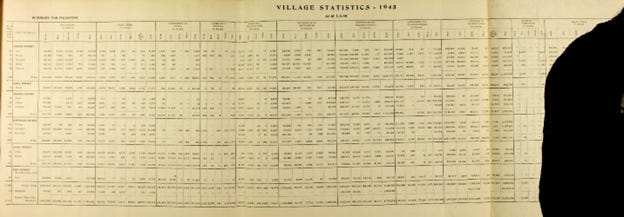
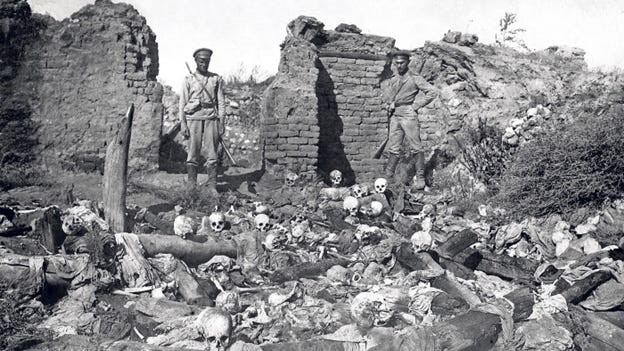
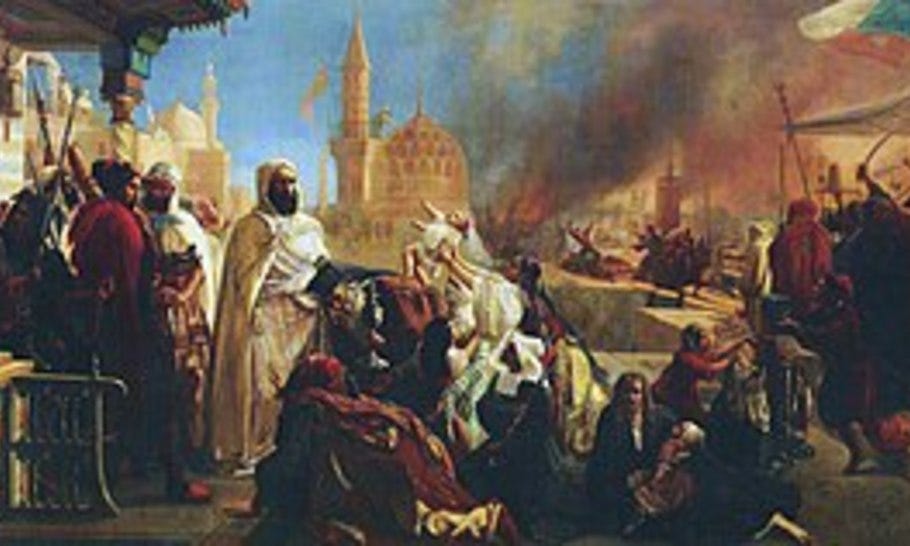
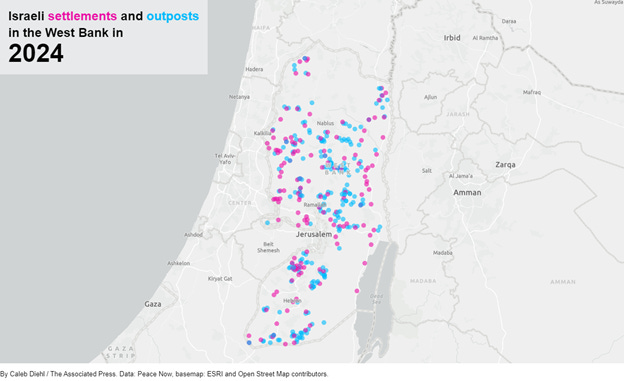
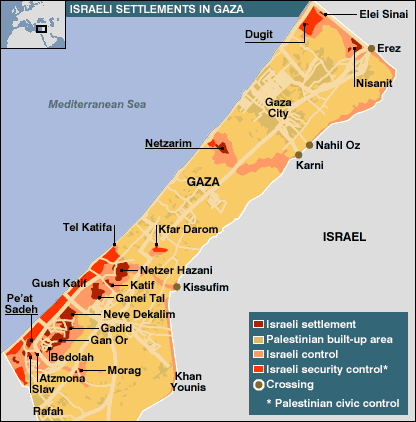
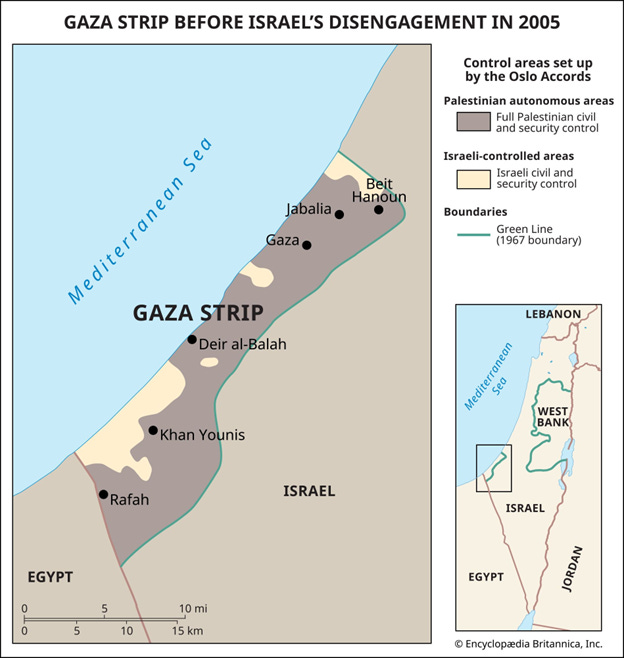
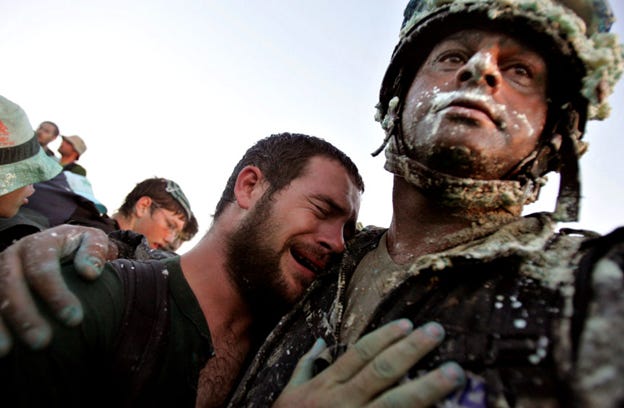
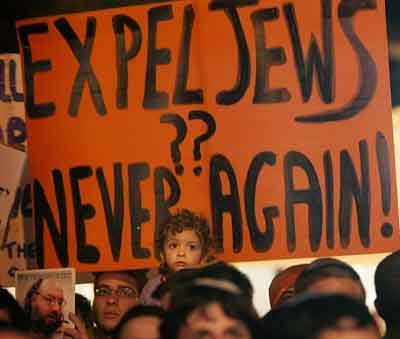


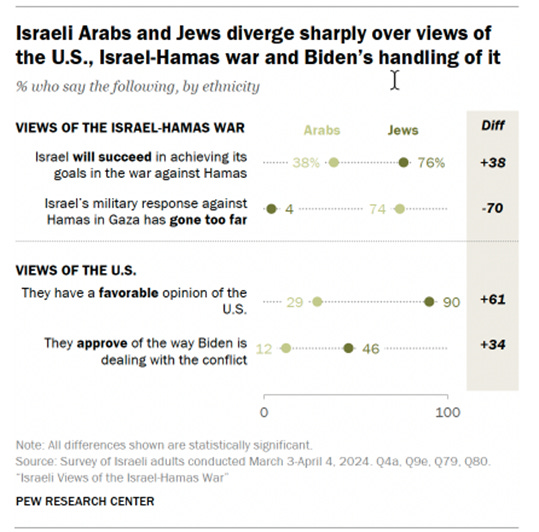
Great work here and I'm glad you put in the historical context of displaced people. Sadly, little history is taught in American government schools. As far as the public support in most Western countries for the Palestinians, despite propaganda to make it look widespread, it is limited to Muslims, student activists, and the leftist academics who are bought and paid for with ME cash. Most people in the middle can see that Muslim countries aren't tolerant, free, and don't share Western values. Israel may not be perfect, but they share Western values.
Another great analysis and detailed review of recent history. As a Christian who has repeatedly read the Bible, New and Old Testament, I have only one concern. My concern is that most, if not all, of the analysis, written and spoken, ignores the historical facts contained in that book. We know the exact territory God covenanted to Abraham, Isaac, and Jacob (Israel) and that that covenant was, and is, forever. To give credence to man and man's declarations in contradiction of that covenant is futile and will always end in misery, suffering, and death.
Until we, mankind, get back to the truth of God's word, there will be no peace.
I hope and pray that is where you are going with this excellent historical survey.